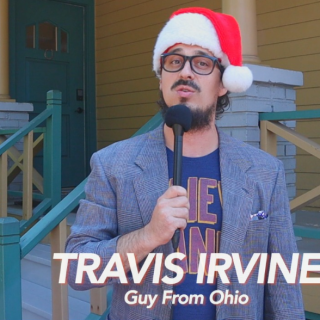Advertisement
I never really thought of Florida as part of the South. Today, the backbone of the Sunshine State is tourism, and it’s well known for its beaches, theme parks, and retirees. But it is the southernmost contiguous state in the country, and borders on two of the most racist states in America–Alabama and Georgia. Like the rest of the region, Florida was rigidly segregated and could be and often was a dangerous place for a black person.
As a professor of African American history, I consider myself almost immune to being shocked about racism in America. Yet Beneath a Ruthless Sun is the tale of as bizarre a form of racism I have encountered. On December 17, 1957, Blanch Knowles, the wife of a prominent Florida citrus grower, contacted her lawyer to report that she had been raped by a bushy haired Negro. Willis McCall, the town sheriff, issued the order to round up the usual suspects, and every black man in the small town of Okahumpka was arrested and jailed. I expected this story to be like so many others: an innocent black man is arrested, jailed, tried in a kangaroo court where he is found guilty and sent to the electric chair. Or perhaps he would be one of the thousands of black men who were broken out of jails and lynched in plain sight right then and there.
But Joe Knowles, the husband of the victim, had other ideas. Mrs. Knowles was at home with their three children because her husband was across town in bed with another woman. He let it be known that it would be too humiliating for the couple to admit that she was raped by a black man. McCall had to find another suspect.
Jesse Daniels was a developmentally disabled white teenager; he had the mental capacity of a child of about eight. When McCall asked him to come down to the jail to answer some questions, Daniels readily agreed. “Sure, I’ll go. I’m not afraid. I want you to get the right man. After all, my mother’s a woman.” He was in jail from then on; he had no access to counsel, and at first, even his parents were barred from seeing him. Meanwhile, the black suspects were released.
Several days after Christmas, McCall and Gordon Oldham, the state’s attorney, concocted another story. It was said Mrs. Knowles was mistaken about the racial identity of her attacker. Jesse Daniels committed the crime. With the cooperation of a judge and the attorney who was finally appointed to represent him, McCall was able to have the young man committed to the State Hospital for the Insane in Chattahoochee. In spite of the herculean efforts of his mother and a journalist named Mabel Norris Reese, Daniels spent almost fourteen years in this Dickensian place that was more like a prison than a hospital. The hospital was filthy, overcrowded, barely maintained, and lacking in medical services. Like other patients, Daniels was subjected to the worst kind of human behavior.
Beneath a Ruthless Sun reads like a southern gothic novel. The most prominent character was the sheriff, Willis McCall. He was not only a despicable racist; he was evil incarnate. McCall had gained national notoriety in the 1949 case of the so-called Groveland Boys, four young black men accused of raping a young white girl and beating her husband. While transporting two of the accused to court, he shot both of them in cold blood, and one of the young men died. Despite his despotic brutality and investigations into his conduct as sheriff, he was elected to office for seven straight terms.
The real heroines of this story are Daniels’ mother, Pearl, and Mabel Norris Reese, a local journalist and newspaper owner. Mrs. Daniels was like the persistent widow in the gospel of Luke: she pestered anybody and everybody at the local, state and national level for years to gain justice for her son. Reese was well known as someone who marched to the beat of a different drummer, and not even harassment by the Ku Klux Klan could get her to drop Jesse’s case.
I found Beneath a Ruthless Sun a frustrating and disturbing read. I am not a fan of southern gothic writing, and King spends the first seventeen pages of the book on a history of the orange industry, which I found irritating. (Other subjects get this treatment, too.) Moreover, the historian in me is well aware of how racist America has and is. The country’s history is replete with examples of whites who so hate black people, they will hurt other white people to prove it. Yet I still found myself astonished and furious at the lengths to which Joe Knowles and the officials in this went just to keep from admitting that a black man had raped a southern white woman.
Beneath a Ruthless Sun is not a book I will read again; indeed I can hardly wait to pass it on to someone else, and get it out of my house. It’s so important, however, I have no trouble urging others to read it.
Mabel Reese may have felt that justice won out in the end, but I sure as hell don’t. Where was God? And how did these people sleep at night?



